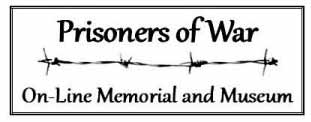Robert Buckham’s long march
Firsthand Long March Accounts, Liberation and Repatriation, Published accounts, Treatment and WelfareRobert Buckham, a Pilot in the Royal Canadian Air Force, started his long march from Stalag Luft III.
In later years he told his story in 'Diary Of A WW2 Prisoner: How I Survived A Nazi Death March | Forced March To Freedom'
Watch the…
Harry Drew’s war
Capture, Escape and Evasion, Firsthand Long March Accounts, In Camp, Liberation and Repatriation, War DiaryWith the kind permission of Major Nigel Capel we are pleased to provide access to
HARRY DREW’S WAR
(COMPRISING THE WARTIME LOG OF,
AND DEPICTING VARIOUS OTHER WW2
AND ARMY SERVICE ITEMS BELONGING TO,
LANCE SERGEANT HENRY RICHARD (HARRY)…
Fortress and Fortitude: “Lassie Come Home” a story of wartime resilience
Capture, Long MarchesAuthor Jerry Krassner
One day in late 1943, while in final training prior to their deployment to Europe, B-17 Flying Fortress bombardier Lt Harry Jensen and some crewmates went to the post theater at Langley Field, VA. The movie “Lassie Come…
Thomas James Edwards’ War Diary
Capture, In Camp, Liberation and Repatriation, Long Marches, Treatment and Welfare, War DiarySgt. Thomas James Edwards, known as “Jim” to his friends and family, was also my Grandpa. He served in the RAF with the 502 Squadron during World War II. In September 1942, his plane was shot down, and he became a prisoner of war at Stalag…
JUST ANOTHER COUNTRY BOY and an unwilling guest of Hitler – The Life of Ken Latheron
Capture, In Camp, Liberation and Repatriation, Long Marches, Post-war experiences, Published accounts, Treatment and Welfare, War DiaryThe Life of Ken Latheron. Compiled and edited by Julia Stephen.
"For some years my friends and relations have asked me to write my memories of the
Second World War and of my incarceration in various Stalags in Poland and Upper
Silesia. This…
Gordon Bourner #6403285 Royal Sussex Regiment. War Time Account.
Capture, Escape and Evasion, In Camp, Liberation and Repatriation, Long Marches, Treatment and Welfare, War Diary, WorkIntroduction
Gordon Bourner - Private Number 6403285, Royal Sussex Regiment - began his training in Brighton in January 1940 (having enlisted in September 1939?). This is his account of his wartime life.
Gordon, my father, wouldn’t talk…
S J Woodman’s long march diary transcript
Liberation and Repatriation, Long Marches, War DiaryStanley John Woodman, was a Sapper (from the French word sappe - spadework, or trench) in the Royal Engineers, Army No. 2069751
He was confirmed as POW, No. 220907, on 24/10/1942.
Written at the top of page 1 of Stanley’s account…
Henry Albert Silk’s Long March
Firsthand Long March Accounts, Long Marches, War DiaryHenry Albert Silk was born in 1922 but gave his data of birth as 1920 in order to join 6th Battalion, Royal Tank Regiment, the British Army. Along with many others, he completed the long march west from Stalag VIIIB commencing on 22nd January…
Brian Magill’s Death March diary
Long Marches, War Diary
Open B Magill's Diary 21st June To 2 May 1942 To 1945 to see a scan of all pages
Ivan Douglas McPherson’s #34461 Long March notebook transcript
Firsthand Long March Accounts, Liberation and Repatriation, Long MarchesIvan McPherson # 34461 kept brief notes of his long march in a notebook
January 22nd: Cosel Hafen left 4.30pm.
23rd: Reached Gros Naukirch now Polska Cerekiew, Poland at 5am, Left at 8pm.
24th: Reached Gros Nimsdorf, now Naczeslawice,…
